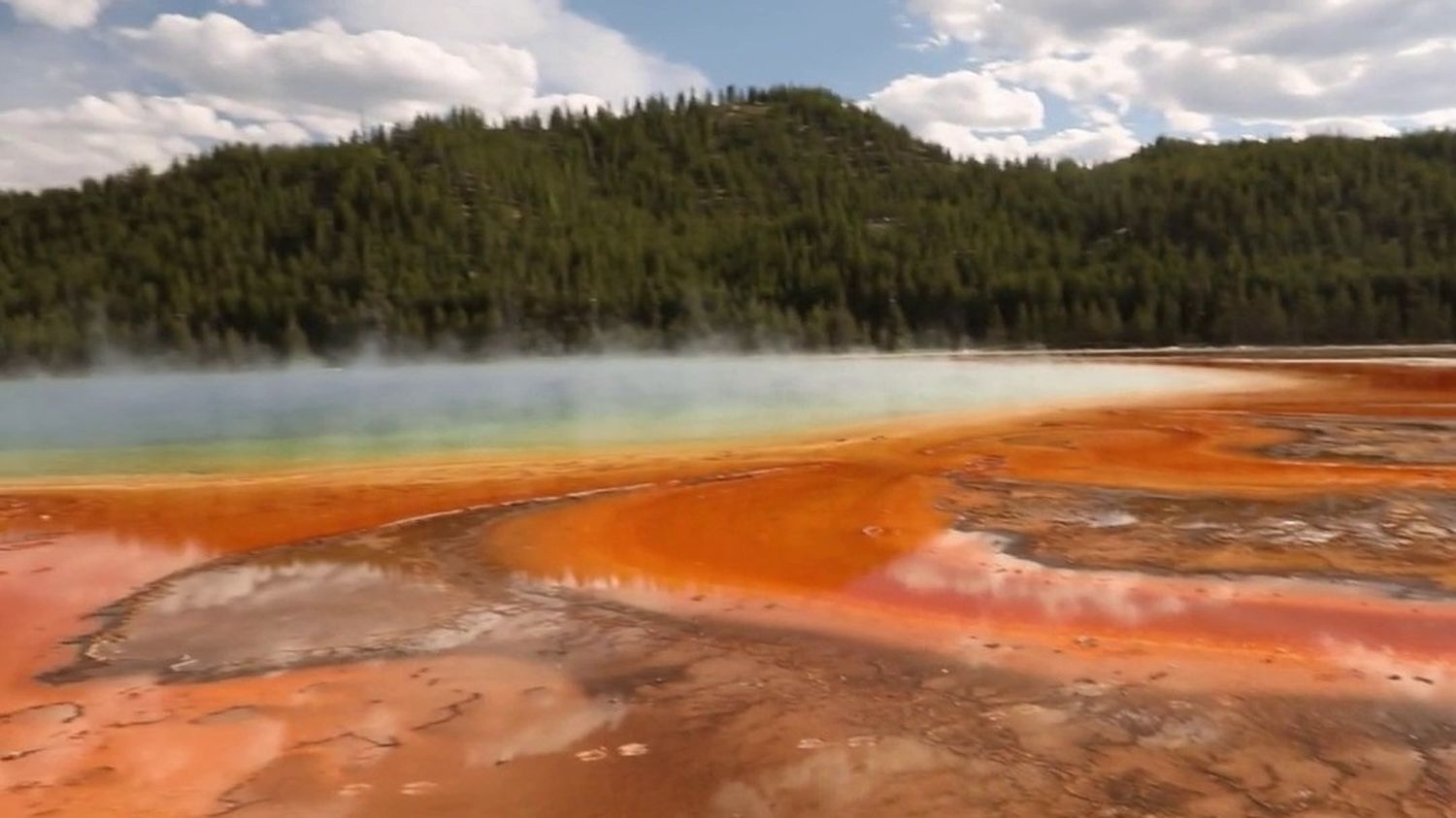Published
Video length: 6 min
United States: Yellowstone Park, a preserved natural jewel, captivates crowds
In the United States, the Yellowstone Natural Park attracts thousands of visitors each year. Its unique ecosystem and breathtaking landscapes make it one of the most popular sites in the world, for tourists and scientists alike.
(France 2)
Its unique ecosystem and breathtaking landscapes make it one of the most popular sites in the world, for tourists and scientists alike.
Diving into the immense plains of Yellowstone Park in the United States is to experience wild life. The one where animals populate the Earth in freedom, and where the landscapes have been shaped by the elements and time. In these untouched places, the earth’s crust is so thin that geothermal phenomena can be observed with the naked eye. A rainbow of colors that fascinates visitors.
Forged following a volcanic eruption, the park has more than 10,000 hot springs. It includes almost half of the world’s geysers. A phenomenon that hundreds of visitors come to observe. A jet of bubbling water from the depths of the Earth, propelled between 32 and 54 meters in height. The place also contains another source with a mysterious name: the Grand Prismatic. An exceptional phenomenon that attracts microbiologists from all over the world. “Trillions of cells grow together in this microbial community (…) this increases our knowledge of what living organisms can tolerate in terms of temperatures”explains Dana Skorupa, a microbiologist at the University of Montana.
